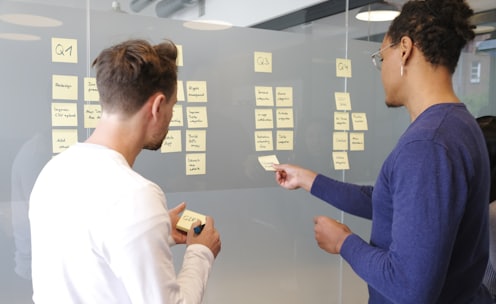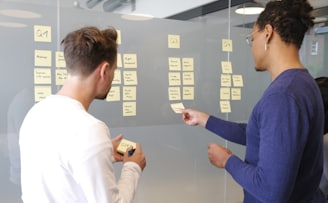Can you scale your start-up and stay agile?
Netflix and Spotify both have, and so can you. Here are some top tips to help you maintain your start-up culture and agile approach while avoiding getting bottlenecked by slow-moving bureaucracies.
Why agile?
Agile is an iterative approach that enables start-ups to deliver value to their customers faster than incumbents. Instead of betting everything on a "big bang" launch, agile companies deliver work in small but consumable increments. As a result, being agile typically results in higher productivity, better morale, faster time to market, better quality, greater ability to adapt to consumer or market changes, and less risk.
But as your start-up organisation starts to scale, it's easy to lose sight of these agile strengths and let bureaucracy put down roots and slow you down.


Start by being an agile leader
Agile is best for innovation - products, processes, or business models, within software & product development and marketing. The C-suite team should focus on communicating the long-term vision, sequencing the strategic priorities, and establishing the organisational capabilities to achieve these goals.
Top-down planning doesn't work. Instead, set and sequence the opportunities and facilitate the strategy becoming a continuous process. The C-suite can also divide itself into small agile teams to resolve the most significant strategic challenges or to plan ahead.
Agile teams should be small, multidisciplinary, self-governing, be able to adapt quickly to change and be accountable for outcomes. Agile teams need to take large, complex problems, break them down into modules, and develop solutions through rapid prototyping and tight feedback. An agile C-suite team should trust and empower people, not command and control them.


Create some taxonomies
The best way to get started is to create a taxonomy of teams and a sequencing plan that reflects your key strategic priorities. This helps encourage exploration; it breaks your vision down into smaller steps and reveals any talent gaps. The intent is to ensure you have the end-to-end resources to deliver the outcomes needed.
Start with the Customer Experience, encompassing all of the experiences that affect customers' decisions, behaviours, and satisfaction. Technology systems are next up, aiming to improve all processes that support the customer experience. Business processes are also vital so that you can reduce overlapping responsibilities and increase collaboration between process teams and customers.


Sequence priorities
The C-suite needs to set the priorities and sequences based upon strategic importance, budgets, availability of people, ROI, cost of delays, risks, and interdependencies between teams. It's usually best to start with the initiatives that offer the most significant value and the most learning. For example, the most successful companies focus on vital customer experiences, especially Direct to Consumer companies, who rely on quality customer experiences to help promote their value.
No agile team should launch until it's ready to begin. The critical criteria are that they should be focused, responsible, trusted, committed, empowered, able, and supported.


Take a modular approach
Agile requires modularizing and integrating workstreams. For example, design IT architecture to enable developers to make fast, frequent releases without jeopardizing any complex systems. Similarly, product development also benefits from a modular approach to allow each module to innovate independently.
Design the interfaces between agile teams and support-and-control functions, such as Finance and HR. Their 'customers' are the agile teams they support. Give accountability for budget management to agile teams. For example, the CFO operates in an advisory capacity, and finance 'business partners' are embedded in agile teams.


Adopt a VC mindset for funding
Annual planning and budgeting cycles tend to constrain innovation. Unproductive projects burn through cash, while critical innovations gather dust waiting to get funded. The original concept will change significantly through development for two-thirds of successful innovations. Customer needs change frequently, and breakthrough insights can occur anytime, so agility must drop some features and launch others rapidly.
Adopt a Venture Capitalist ("VC") mindset for funding projects. Funding opportunities should be seen as opportunities to purchase options for further discovery, e.g., to find a critical component of the ultimate solution. Fail fast, learn quickly and accelerate the rate of learning. This helps improve the speed and efficiency of innovation.


Create successful teams
Create systems to acquire and motivate star talent proactively. For example, reward "A" players by putting them on the most critical initiatives, giving them the most advanced tools, the greatest possible freedom, and connecting them with talented mentors.
Hire talent for expertise and enthusiasm to work collaboratively in teams. Make teams jointly accountable for outcomes and make compensation packages based on the performance of agile teams, not individual objectives. Performance assessments to provide feedback and coaching every few weeks, with training to encourage the development of cross-functional skills.


